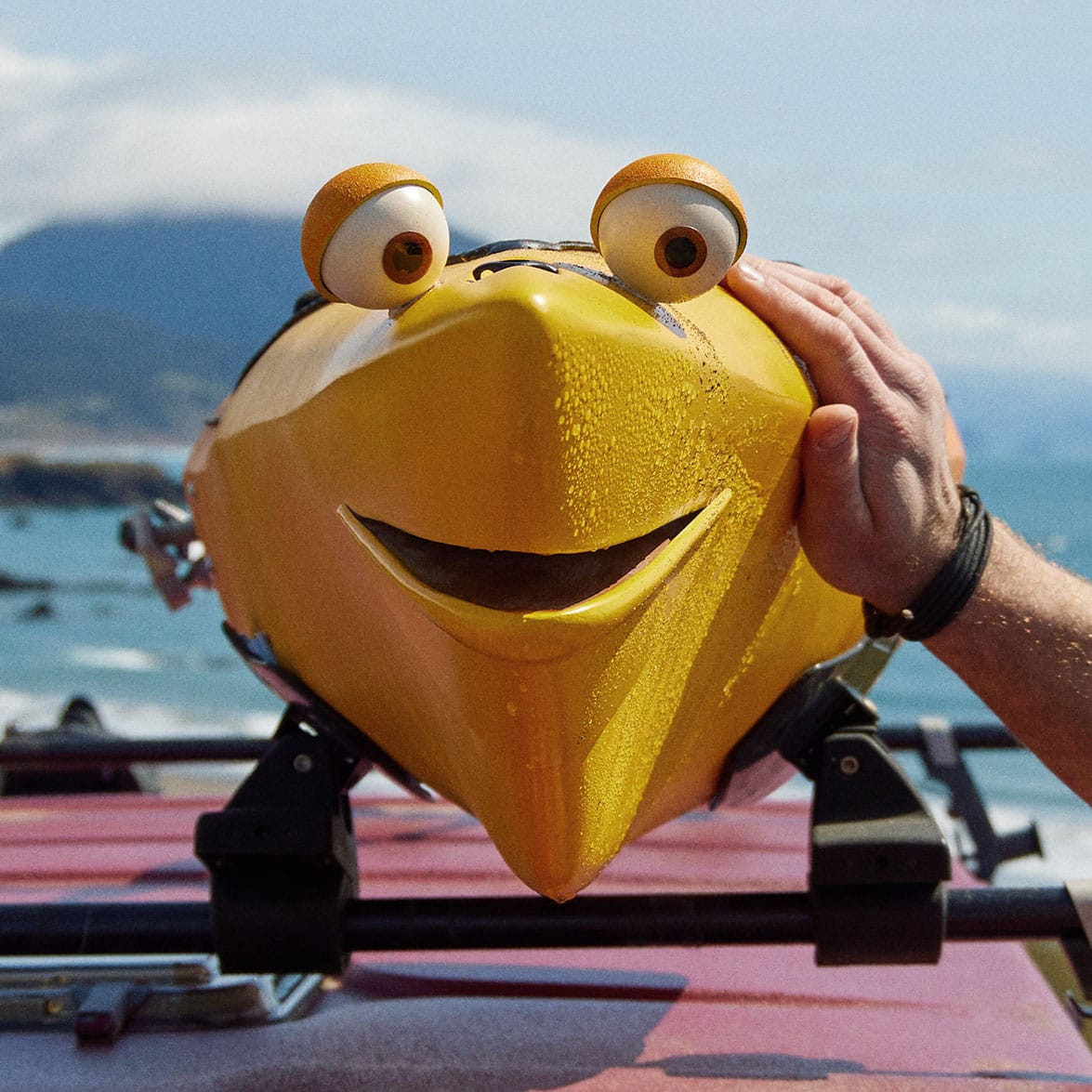Nearly a decade ago, I kissed my aging compact car goodbye. When I finally pulled the key out of its ignition, it felt a little like breaking up with a boyfriend. Sure, we had plenty of good times together on drive-through-the-night road trips, with scuffed Prince CDs blaring on repeat. But I was ready to leave the auto life behind, so I traded in my wheels for a bike and a new pair of shoes.
In the years since, “multimodal” has become my travel manifesto. I’ve visited nearly every major U.S. city without a car — decoding bus timetables, jumping on and off intercity trains, and huffing while pedaling up steep hills. I’m the first to admit that it’s not always a cakewalk in a nation where everything seems designed for drivers, though certain destinations make it easy and even fun. Oregon is one of those rare places where car-free travelers can get around without much hassle.
Oregon’s car-free cachet starts with Portland’s comprehensive transportation network and extends to bikeable and walkable communities around the state, from sandy excursions on the Coast to rugged adventures in the sunny high desert. If you’re flying into the Pacific Northwest for the first time or if you’re a local looking to trim your carbon footprint, here are a few iconic trips you can take via Wi-Fi-enabled coaches, scenic trains, pay-by-the-minute bike shares and regional transit.
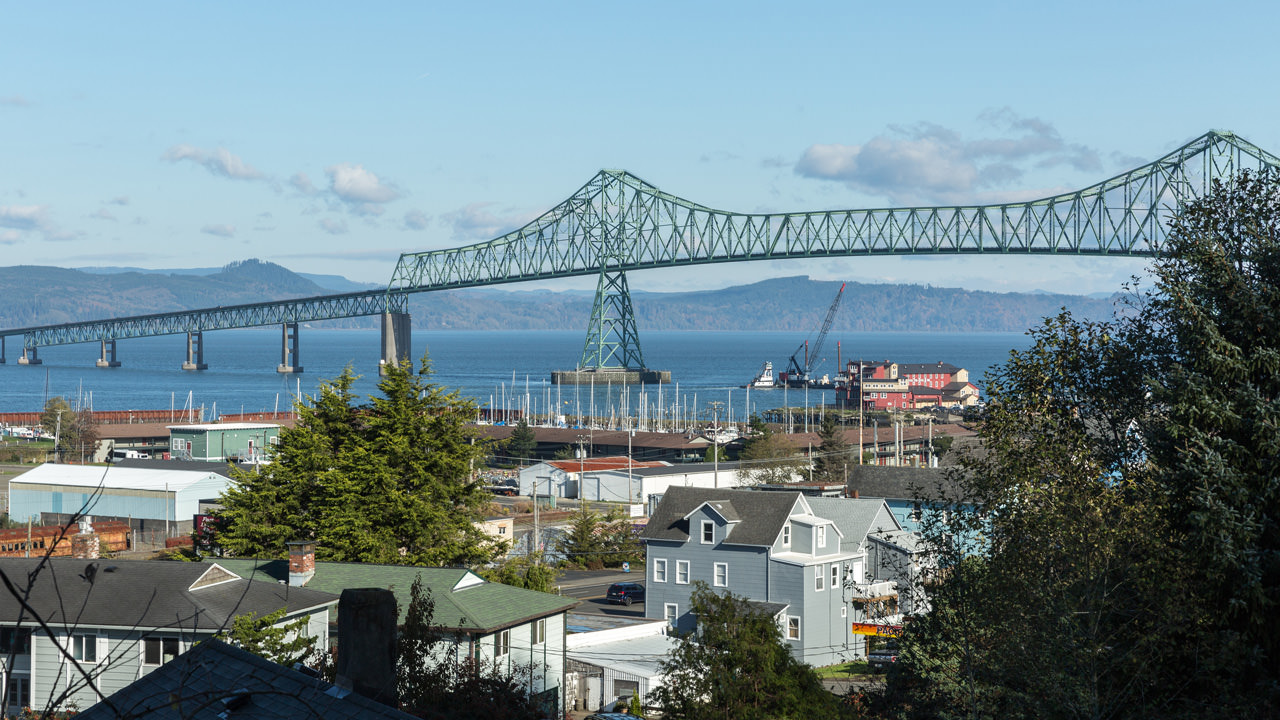
Portland to the North Coast
Go by: Intercity coach + regional public transit
Famous for: Storied coastal towns and misty beach vibes
Trip length: Minimum three days for a quick tour; a week for a relaxing pace
Exploring Oregon’s marquee metropolis, with its efficient system of light-rail trains and streetcars, feels reminiscent of visiting a European city — and that ease doesn’t end at the edges of Portland. You can go from urbane Victorian neighborhoods to turn-of-the-century beach resorts in less than two hours with a quick intercity coach trip from the City of Roses to the storied towns of the North Coast. Hop on a NorthWest POINT bus at Union Station for the trip to the sandy shores of Cannon Beach, with service onward to the classic coastal playground of Seaside and the hilly riverside port city of Astoria. The latter makes a cool base camp for a culture-focused getaway, especially in the less-crowded months of fall, winter and spring. This haven for artists and entrepreneurs woos weekenders with a monthly art walk, homegrown breweries and even a Museum of Whimsy. With its pastel-colored homes and a vintage downtown filled with independent shops, Astoria has a cinematic vibe. No wonder it’s starred in so many Hollywood films.
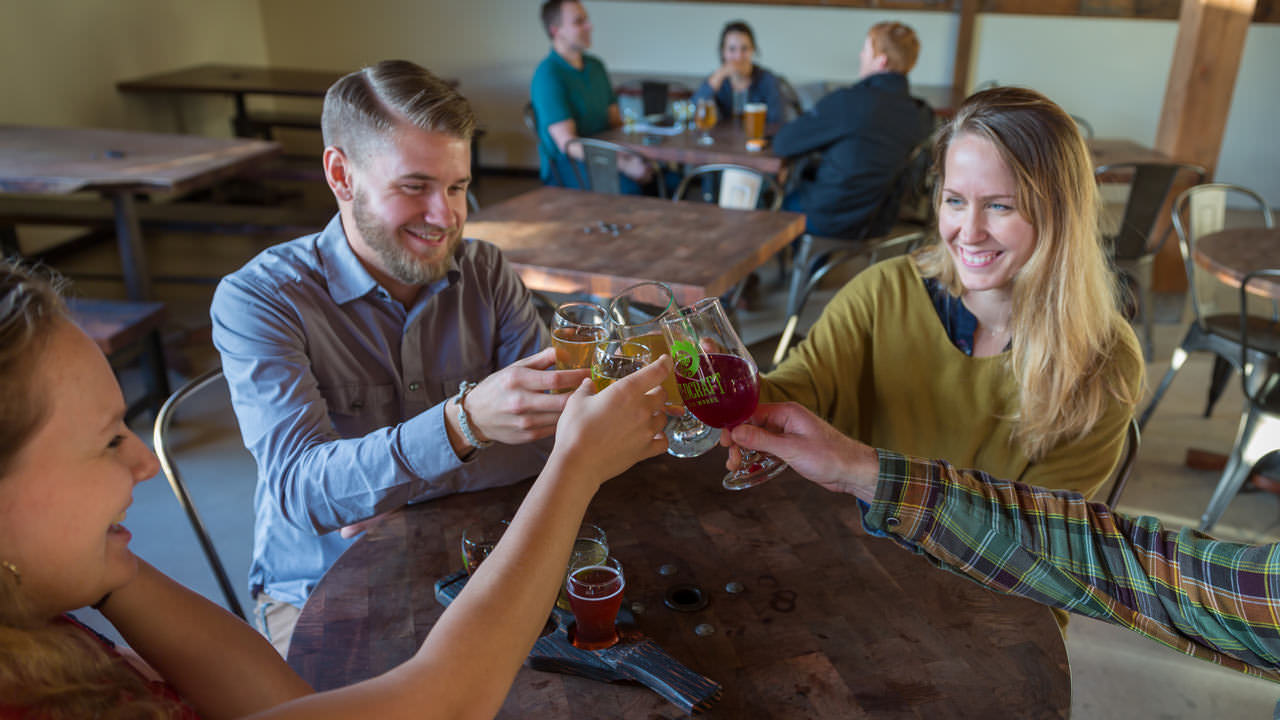
Willamette Valley Train Tour
Go by: Amtrak train + bring your own bicycle (if you like)
Famous for: Historic cities with trendy culinary scenes
Trip length: Minimum three days for city visits; a week to take rural side trips
What’s arguably the most delicious train journey in America glides through the fruitful Willamette Valley, famous for its 500-plus wineries, hazelnut orchards and family-owned farms. Tote your bike along and take a whistle-stop tour of the valley’s historic cities on the Amtrak Cascades line, which allows riders to check bicycles in advance for a nominal fee (book early, as the Cascades line has only 10 bike racks per train). Start with a taste of the good life in Eugene, a hub for counterculture cool with a new wave of chef-owned restaurants as well as inventive urban wineries, breweries and cideries. Jump on the train heading north for vintage shopping and walking tours of the historic districts in the agricultural city of Albany. And then it’s onward to Salem, where Archive Coffee & Bar — a coffee shop that transforms into a cocktail lounge at night — epitomizes a younger generation that is reshaping the dining scene in the state capital and beyond.
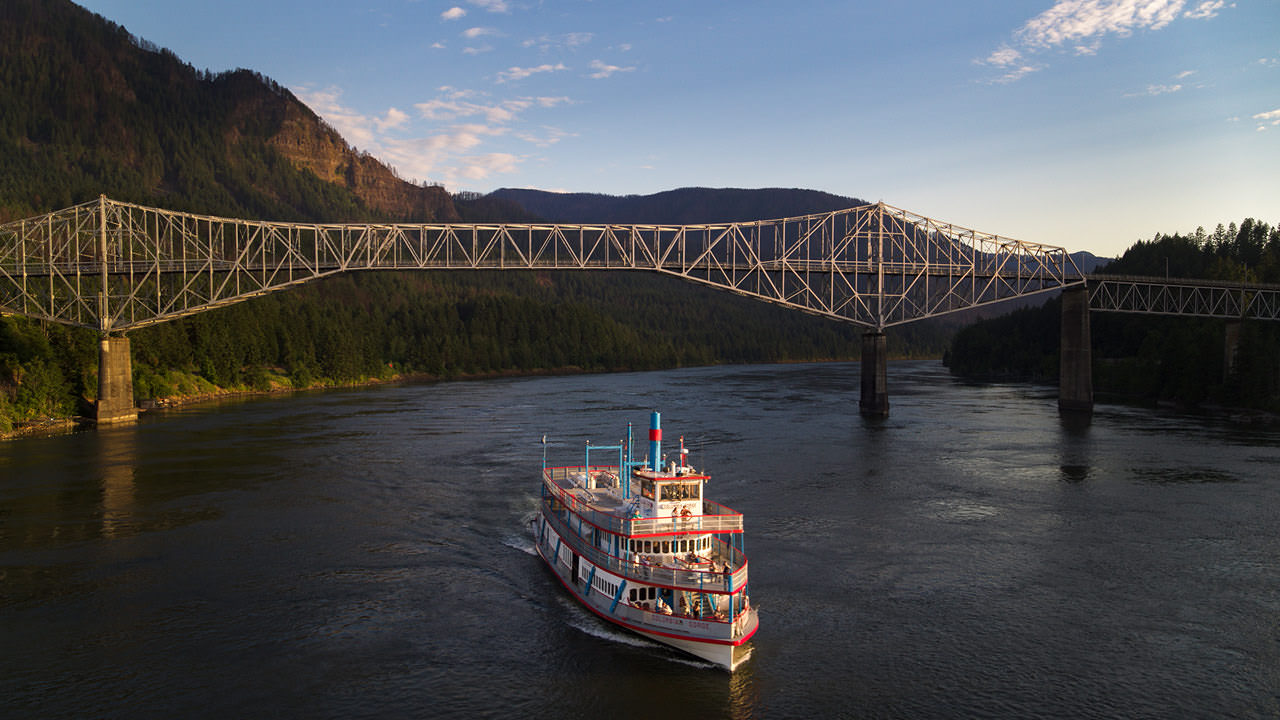
Columbia River Gorge
Go by: Intercity coach service + regional public transit
Famous for: Thundering waterfalls, a massive river and panoramic views
Trip length: A day trip is easy, but schedule at least three days to see the sights
The close proximity of the Columbia River Gorge National Scenic Area to the Portland metro area means that many travelers see it from a car window on a whirlwind tour. But on weekends and throughout the summer, traffic and congestion near such popular sites as the stunning (and often crowded) Multnomah Falls can detract from the fun. Good news for those who go car-free: This Tolkien-esque landscape of moss-draped basalt cliffs and panoramic viewpoints rewards travelers who take a slower pace. The affordable and convenient Columbia Gorge Express, operated by the Columbia Area Transit, departs frequently from Portland’s Gateway Transit Center, stopping at Rooster Rock State Park, known for its sandy beaches (including a designated clothing-optional section that’s LGBTQ-centric); Multnomah Falls; the small town of Cascade Locks, where you can catch sternwheeler cruises of the Gorge; and Hood River, a recreation hot spot known as the windsurfing capital of the world. While the hop-on, hop-off shuttle service makes a day trip easy, budget at least a couple of nights — with plenty of lodging options in Hood River — to really see the Gorge without a vehicle.
Tip: Explore The Dalles. From Hood River, you can book a quick bus connection to The Dalles, the eastern gateway to the national scenic area where a handsomely revitalized downtown harbors new cafes, a restored art deco theater and the National Neon Sign Museum. Greyhound coaches run daily between Hood River and The Dalles, while Columbia Area Transit provides weekday service and the free Explore The Dalles shuttle connects the two cities on Saturdays through the summer.
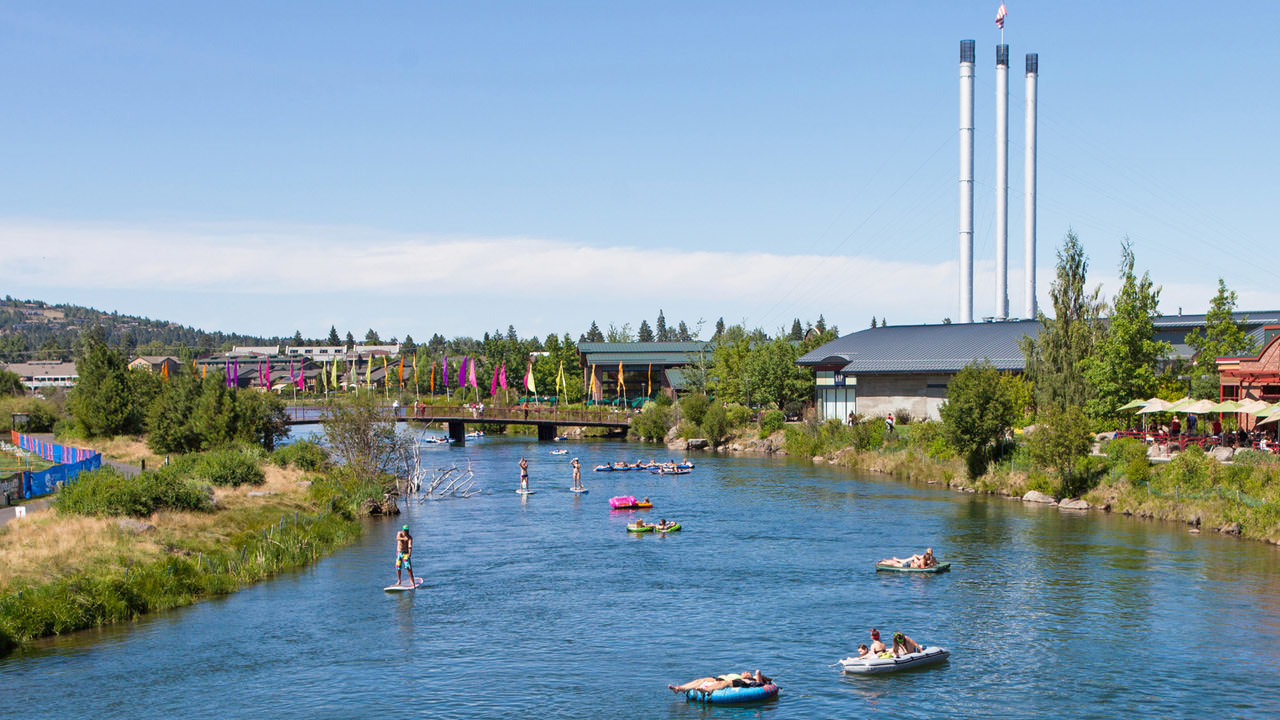
Bend and Central Oregon
Go by: Intercity coach service + regional public transit
Famous for: Rugged outdoor adventures and craft beer
Trip length: Minimum three days for sightseeing; a week or more for epic side trips
Wherever you go in the high deserts of Central Oregon, from floating through Bend on the Deschutes River to strenuous treks in state parks, you might get the sense that you’ve stumbled into a sunny commercial for an all-terrain SUV. But thankfully, plotting an action-packed getaway without an off-road vehicle is painless. Both Greyhound and the family-owned Central Oregon Breeze coaches take you from downtown Portland, over the Cascades, through the Warm Springs Reservation and into Bend, a recreation-obsessed city with a restless streak. Settle into plush hotels such as the Wall Street Suites and the Oxford Hotel in the walkable core, where you can get almost anywhere via the comprehensive bus system and ever-expanding bike share. There’s plenty to see in town, like earning a few stamps for brewery visits along the Bend Ale Trail, but set your eyes on day trips: summertime shuttles for mountain biking at Mt. Bachelor; inner-tubing the river; taking regional transit north and poking around the Old West town of Sisters; and, of course, sunset hikes in every season.
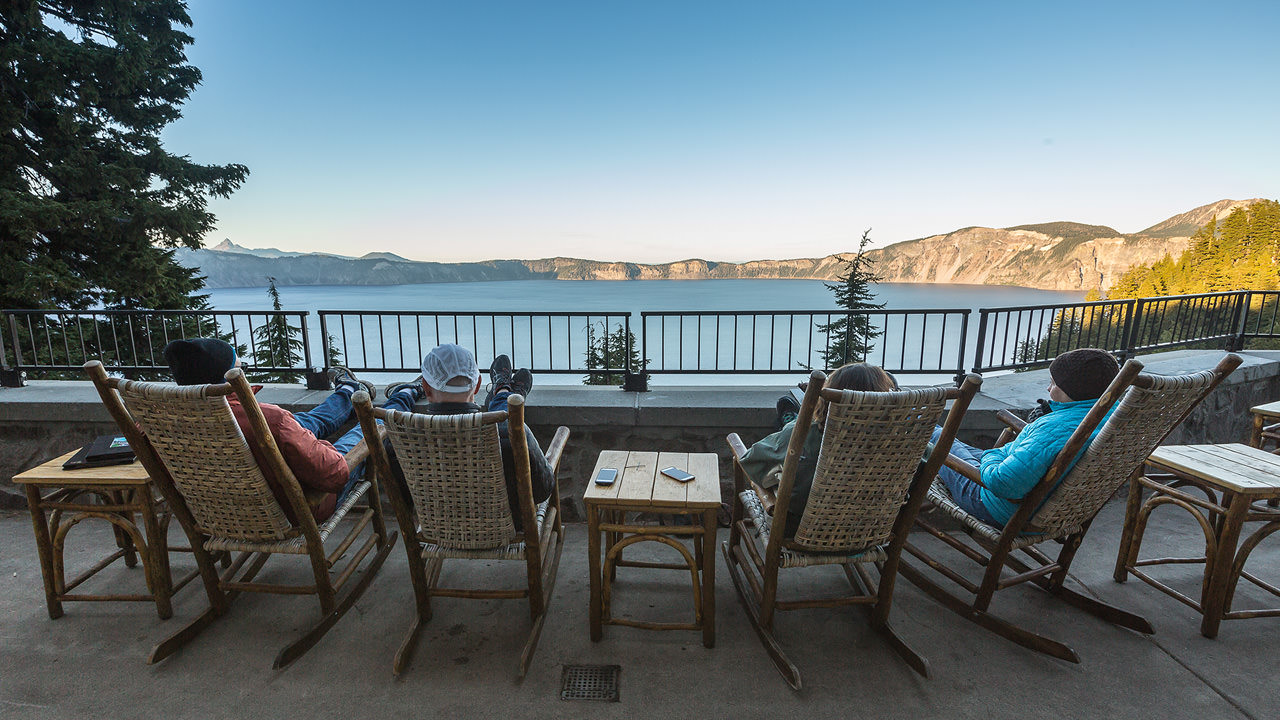
Crater Lake and Klamath Falls
Go by: Amtrak train + coach service onward to Crater Lake
Famous for: Lakes, bald eagles and Oregon’s iconic national park
Trip length: Minimum four days at a hurried pace; a week or more for outdoor adventures
A sojourn to the deepest lake in the United States ranks among the most popular road trips in the West — and, little-known even to lifelong Oregonians, it’s also one of the greatest train voyages in the nation. Departing from Portland, the Amtrak Coast Starlight stops at both Salem and Eugene on its way to Southern Oregon. In this case, the journey is nearly as impressive as the destination: The train chugs for seven hours through national forests and past snowcapped peaks before the 10 p.m. arrival in the Klamath Basin, where vast marshes and lakes lure hundreds of bird species and, of course, bird-watchers hoping to spy regal bald eagles. Spend several days hiking, boating and hanging out at the local brewery in Klamath Falls before catching the (summer-only) Crater Lake Trolley bus connection to Crater Lake National Park, where the endlessly blue waters need no filter and the aptly named Wizard Island makes the whole scene seem like a fantasy.

Eugene to the South Coast
Go by: Intercity coach service + regional public transit on weekdays
Famous for: Artsy beach cities, sandy shores and uncrowded trails
Trip length: Minimum two days for a quick beach retreat; a week for a multitown trip
Everything seems to get wilder the farther south you travel along the state’s 363 miles of shoreline, where you may spot (vintage replicas of) extinct creatures lurking in rain forests at Prehistoric Gardens or lose track of time while hiking through the Oregon Dunes National Recreation Area, the largest expanse of coastal dunes on the continent. Starting in Eugene, you can quickly and conveniently access a string of laid-back beach communities and artsy towns with daily service from Pacific Crest Bus Lines. It takes only one hour to arrive in Florence on Oregon’s Central Coast, an eminently walkable fishing port packed with galleries, antique stores and ocean-fresh fish markets. The coach cruises on Highway 101, aka the Pacific Coast Scenic Byway, toward the free-spirited South Coast, a marvelously quiet stretch of capes and boulder-strewn beaches, where you can make your way on regional transit from Coos Bay to Bandon, Port Orford and Brookings. Make one your target destination, or hop on and off the bus and visit several in one grand tour.
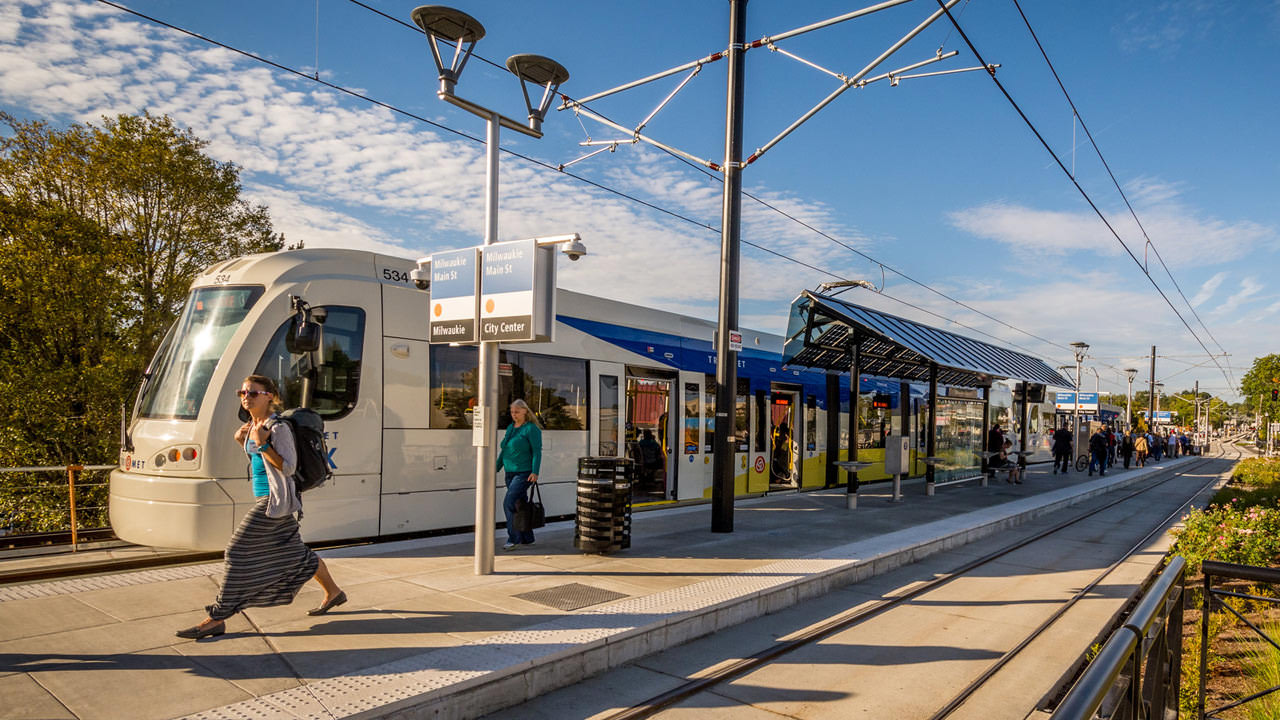
Car-Free Travel FAQs
Inspired to take a car-free trip of your own? Leaving the car behind in favor of alternative transportation is a relatively easy and relaxing way to keep your eyes off the road and on Oregon’s views, but it does require you to plan ahead. Check out these answers to commonly asked questions.
How do I get from the Portland International Airport to downtown (and Beaverton, Hillsboro and beyond)?
It’s easy: The Portland International Airport (aka PDX) is conveniently located near the city center, so you can hop on the TriMet MAX Red Line train and be in the city center in around 30 minutes. It’s cheap, too (a one-way ticket costs only $2.50 and you can pay with your mobile device). The Red Line continues west to Beaverton and then on to Hillsboro; along the way, it intersects with other light-rail lines and bus routes.
Alternatively, you’ll find plenty of other ground transportation options at PDX, including taxis and a designated pickup area for popular ride-share services Lyft and Uber.
Are there airports in Oregon other than PDX that I can fly into?
Yes! Most travelers flying into Oregon will land at the Portland International Airport. Thankfully, Portland has convenient transportation connections to other regions of the state, which is why many of the car-free itineraries featured above start in the Portland Region.
Several other regions have airports with frequent flight services including the Eugene Airport, the Rogue Valley International Airport in Medford, the Redmond Municipal Airport in Central Oregon and Pendleton’s Eastern Oregon Regional Airport.
Why does Google Maps say a car-free route will take forever?
Keep in mind that your navigation service may not have access to complete regional transit information. Google Maps and similar mobile apps are a car-free traveler’s best friends, but you’ll want to take automated directions with a grain of salt. This is especially true if you’re taking an intercity trip. For example, a service like Google Maps may not incorporate all transportation options between cities, so a maps app might create a convoluted itinerary that includes multiple transfers when you could otherwise take the trip on a single private coach.
Follow this rule of thumb when traveling between cities on public transit: Only use navigation apps as a general guide — always plan your trip using the official transit websites and timetables. If you’re traveling locally within the Portland metro area, consult TriMet’s online transit planner and tracker.
Will my ride-share apps work in Oregon?
These Oregon cities are all covered by both Lyft and Uber, though check your app as the service networks are always expanding: Albany; Ashland; Bend; Corvallis; Eugene and Springfield; Medford; Portland (plus Beaverton, Gresham, Hillsboro and Oregon City); and Salem.
If you’re in an area without these ride-share services, don’t fret: Nearly every sizable town in the state has a regional taxi service; check local directories for phone numbers to schedule a ride.
I’m a cyclist; can I take my bike with me?
Oregon loves cyclists. Amtrak and transit services such as the Columbia Gorge Express and TriMet have designated racks for cyclists bringing their bikes along. Other bus lines — including Greyhound, Bolt Bus, Central Oregon Breeze and NorthWest POINT — treat bikes as oversize luggage, which means they’re permitted based on driver discretion as long as there is space in the luggage bin. If you’re an experienced and confident road rider, you can travel almost anywhere in the state on the Oregon Scenic Bikeways, which are officially designated routes selected and curated by experts, with printable maps, GPS and signage; along the way, you’ll find bike-friendly hotels and B&Bs that cater to your needs.
